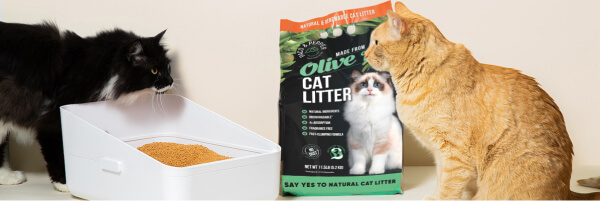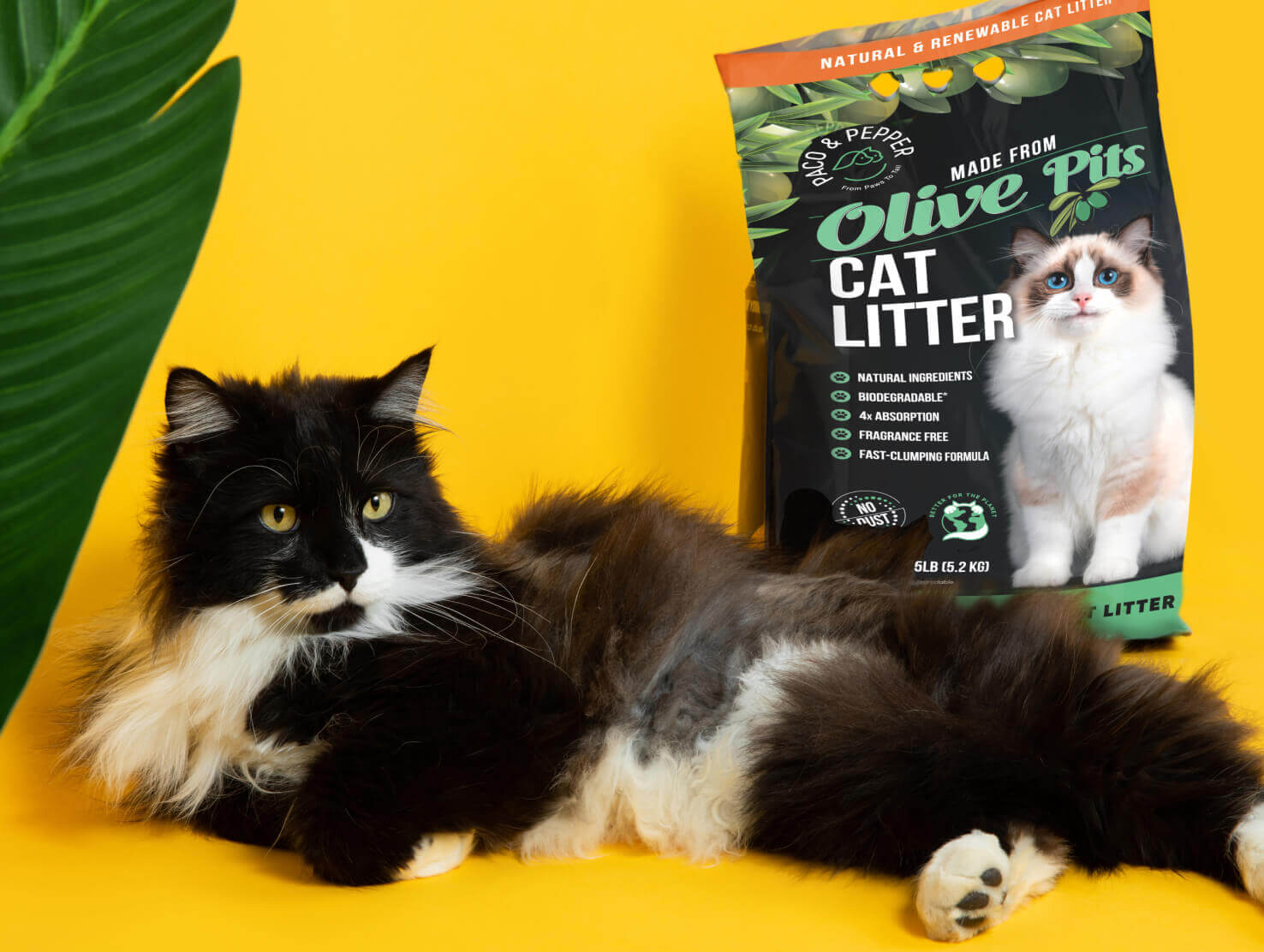What is non-clumping cat litter?

When it comes to choosing the right litter for your cat, understanding the differences between clumping and non-clumping types is critical. Non-clumping cat litter in particular offers unique benefits and requires special care. This guide explains what non-clumping cat litter is, how it works, and why it may be the right choice for your feline friend.
Why use non clumping cat litter?
Non-clumping cat litter is usually made from materials such as clay, wood, paper or silica that do not clump when wet. This type of litter absorbs urine and coats feces, which helps control odor without the litter particles clumping together.
Materials used in non-clumping cat litter:
Clay. The most common type of non-clumping litter is made from clay, especially baked clay. This material
quickly absorbs liquid, but produces a lot of dust, which can be dangerous for cats and their owners.
Wood: Sawdust or recycled wood scraps are often used to make non-clumping wood-based litter. These are natural
and biodegradable materials that provide good odor control and moisture absorption.
Paper. Recycled paper is another eco-friendly option used in non-clumping litters. It is gentle on cats' paws
and is often recommended for cats with allergies or sensitivities.
Silica: Silica, a highly absorbent material, is also used in non-clumping litter. It can absorb a large amount
of liquid relative to its weight and is effective at controlling odors, but it is not the safest litter.
How does non-clumping cat litter work?
The main function of non-clumping cat litter is to absorb moisture and retain odors. The materials used in non-clumping litters are highly absorbent. How does non clumping cat litter work?They absorb urine, which then evaporates, and some odor particles are retained inside the litter. Because it does not form clumps, this litter must be replaced more often than clumping varieties.
Benefits of non-clumping cat litter:
Odor Control: While non-clumping litters do not seal urine for easy removal, they are often treated with
additives that help neutralize odors, keeping the litter box smelling fresher.
Low Maintenance: Without the need to scoop out clumps on a daily basis, non-clumping litter can be less labor
intensive to handle on a daily basis, although it does require complete replacement more frequently.
In conclusion, non-clumping cat litter is an easy and often economical choice for pet owners. It effectively addresses the basic needs of moisture absorption and odor control without the hassle of clump removal, making it a practical option for specific scenarios and preferences.
Is non clumping cat litter better?
Non-clumping cat litter, while useful in certain aspects, does have its drawbacks that can affect both the pet owner's convenience and the overall hygiene of the cat's environment. One of the significant disadvantages is the difficulty of cleaning up urine, since non-clumping litters do not form hard lumps. This may cause urine to remain in the box and require more frequent complete litter replacements and complete cleaning of the litter to maintain cleanliness and odor control. Additionally, because contaminated litter is not easily separated, more litter is typically used over the course than clumping litter, which may be less cost-effective despite the initial lower price of non-clumping litters. What's more, the lack of clumps also means that marks and dust issues can be more pronounced, depending on the materials used. This can create a mess around the litter box and create potential respiratory irritants for both cats and humans, especially if the litter consists of smaller clay and silica particles. For pet owners who require hassle-free care and effective odor and moisture control, these factors may make non-clumping litter a less attractive option.
how to clean non clumping cat litter
Cleaning non-clumping cat litter can be more challenging compared to clumping varieties, primarily because it does not form solid masses when it absorbs urine, making it harder to remove only the soiled portions. In non-clumping litter, urine tends to saturate the litter particles and may pool at the bottom of the litter box if it's not absorbed effectively. This can lead to several issues:
- What does non clumping cat litter mean: Because non-clumping litter doesn’t isolate urine, the entire litter box content needs to be replaced more frequently to prevent bad odors and maintain hygiene. This frequent replacement increases the amount of litter used and can be more costly over time.
- How often should I change non clumping cat litter: When changing non-clumping litter, it’s often necessary to clean the litter box itself more rigorously. Residual urine can seep to the bottom and stick to the box, requiring scrubbing and washing with soap and water to remove odors and residue.
- Odor Management: Non-clumping litter generally does not trap odors as effectively as clumping litter. This can lead to a more persistent smell if the litter is not changed regularly and thoroughly, requiring additional products like baking soda or commercial deodorizers to manage the odor.
- Time-Consuming: The process of completely emptying the litter box, scrubbing, drying, and refilling with new litter is more time-consuming and needs to be done more frequently than with clumping litter. This can be inconvenient for pet owners with busy schedules.
Choosing between clumping and non-clumping litter
The choice between clumping and non-clumping litter often comes down to personal preference, budget, and your cat's needs. Is non-clumping cat litter better?If cost is a concern, consider non-clumping litter. Clumping litter may be preferred for better odor control and less frequent cleaning.
Conclusion
Non-clumping cat litter is a viable option for many pet owners due to its simplicity and cost-effectiveness. Understanding how to properly maintain a non-clumping litter box will help provide your cat with a clean environment. Whatever choice you make, your cat's comfort and health should always come first.


